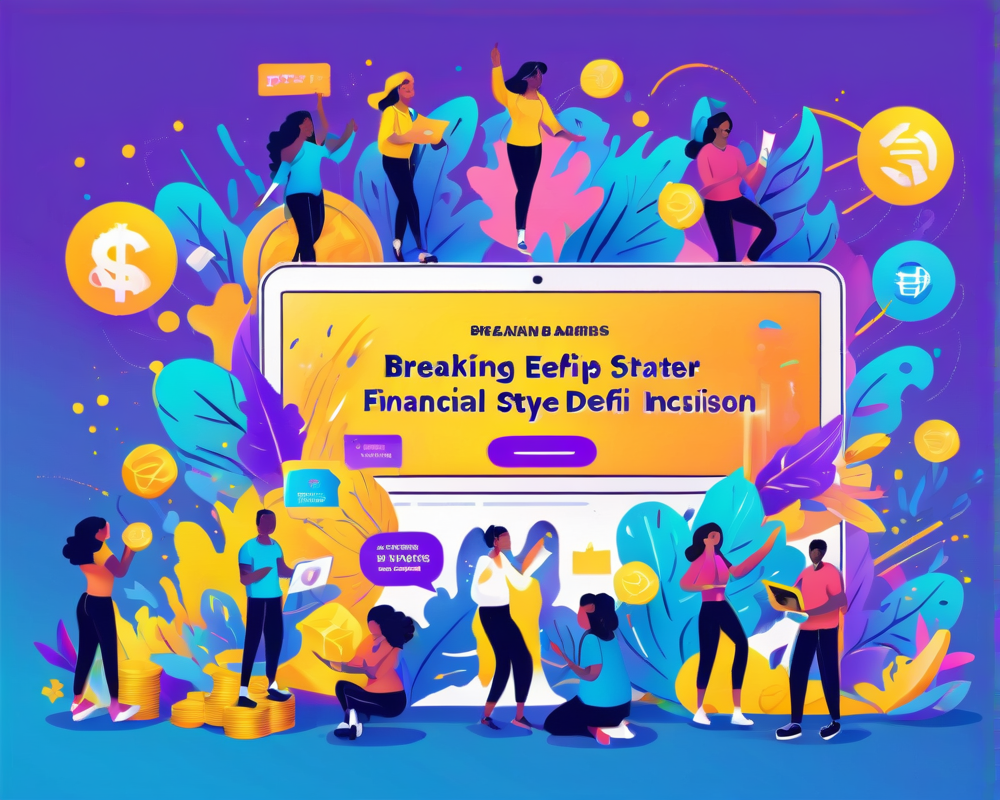The Growth of DeFi: A Double-Edged Sword
Decentralized Finance, or DeFi, has been booming faster than a kid in a candy store. With platforms like Uniswap, Aave, and Compound dishing out liquidity mining and rewards, it’s no wonder crypto enthusiasts are chomping at the bit. However, as we dive into DeFi 2.0 with shiny new players like OlympusDAO and Alchemix, there’s a nagging issue lurking in the shadows: who’s actually benefiting from this financial buffet?
Financial Exclusion: The Uncomfortable Truth
At first glance, DeFi can look like a party, but it seems to be a VIP-only affair. While it’s great for those already dabbling in the world of finance, more than 2 billion people remain unbanked or underbanked, primarily from marginalized communities. It’s like holding a fancy gala but forgetting to send invitations to anyone who doesn’t own a tux.
The Problem with Over-Collateralization
The current framework for DeFi loans heavily relies on over-collateralization, which sounds fancy but is essentially a financial tightrope. For example, if you want to borrow worth 75 Ether (ETH) of DAI on Aave, you’ll need to fork over 100 ETH as collateral! Talk about a hefty down payment! The reasons for this absurdity can be broken down into:
- Collateral volatility,
- Incentivizing loan repayments in a trustless environment, and
- Protocols aimed at those who want to hold onto their crypto while accessing liquidity.
Exploring New Lending Models
Can we revamp the borrowing process? Absolutely! DeFi should embrace community-based lending models that get rid of the “rich get richer” mentality. By tapping into mutual trust and building on shared experiences, we can reshape how lending works.
Mobile-Friendly and Accessible Lending
For this new age of DeFi to flourish, it must cater to the need for small, affordable loans. Operating on chains with low gas fees and allowing easy access through smartphones could bridge the gap for those who haven’t been part of the “crypto club.” Let’s admit it—complex desktop interfaces are about as helpful to someone unbanked as a chocolate teapot.
Redefining Collateral: A Community-Based Approach
Imagine a scenario where community networks pool resources. By combining deposits from individuals and institutions, we can offer loans backed by collateral that’s more accessible! Instead of fixing our gaze solely on over-collateralization, we could move towards stablecoin-backed lending systems with lower loan-to-value ratios.
An Inclusive DeFi Model: How It Works
Here’s how it could work: individuals and organizations contribute assets, known borrowers in their communities receive loans, and repayments occur seamlessly with interest. Think of a basket weaver needing funds to purchase supplies—rather than navigating the traditional bank maze, she could access community-backed funding, making the process efficient and beneficial for all involved!
A Bright DeFi Future: Lessons from the Past
The important takeaway? DeFi should serve as a bridge to improved financial systems that don’t repeat the mistakes of old. Built on mutual credit and community engagement, it can become a multi-layered framework that prioritizes the needs of everyday people. Sure, there’s much to learn from history, and perhaps, just like the proverbial phoenix, DeFi can rise and reap its rewards for the many rather than the privileged few.
The Final Word
As we push the boundaries of what DeFi can do, it’s essential to remember that financial tools are only as effective as the people they are designed for. If the next wave of decentralized finance can manage to integrate real-world community engagement, it could lead us toward a future of genuine inclusion—no tux needed!




